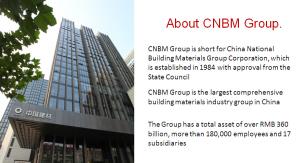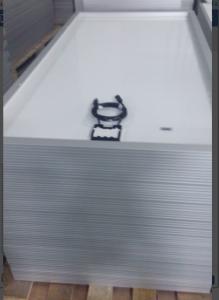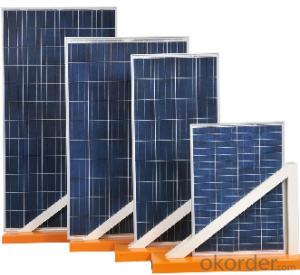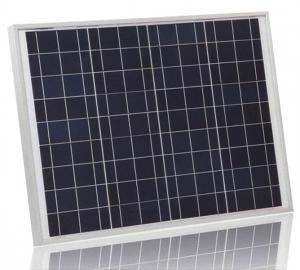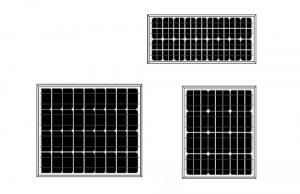Hyperion Solar Panels - Mono 230W Solar Panel Made in China and Low Price
- Loading Port:
- Shanghai
- Payment Terms:
- TT or LC
- Min Order Qty:
- 1 PCS
- Supply Capability:
- 100000 PCS/month
OKorder Service Pledge
OKorder Financial Service
You Might Also Like
Advantage:
1.Widely using of the most popular and mature type of modulesfor on-grid system.
2.Specifications subject to technology and test conditions,GSUN Solar reserves the right of final interpretation.
3.Leading manufacturing technology in PV industry, strictly controlling the quality of raw materials and the process of producing.
4.100% EL inspection, ensures modules are defects free.
5.Cells binned by current to improve module performance.
6.Anti reflective glass. Not only to increase the light absorption, but also to make the module has the function of self-cleaning in water environment, effectively reducing the power loss caused by dust.
7.Outstanding performance in low-light irradiance environments.
8.Excellent mechanical load resistance: Certified to withstand high wind loads(2400pa) and snow loads(5400pa).
9.High salt and ammonia resistance.
10.Positive power tolerance:0-+5w.
Specification:
Temperature Coefficient
NOCT | 45℃±2℃ |
Temperature Coefficients of Isc (%/℃) | 0.0492 |
Temperature Coefficients of Voc (%/℃) | –0.3374 |
Temperature Coefficients of Pmp (%/℃) | –0.4677 |
Performance Parameters
Max Power Voltage Vmp(V) | 30.3 | 30.8 | 31.1 | 31.4 | 31.9 |
Max Power Current Imp(A) | 7.60 | 7.64 | 7.73 | 7.81 | 7.85 |
Open Circuit Voltage Voc(V) | 36.1 | 36.6 | 37 | 37.3 | 37.7 |
Short Circuit Current Isc(A) | 8.50 | 8.55 | 8.65 | 8.75 | 8.85 |
Max Power Pm(W) | 230 | 235 | 240 | 245 | 250 |
Mechanical Data
Dimension | 1655 x 992 x 40 mm |
Weight | 22.5kg |
No. of Cells and Connections | 60 (6 x 10) |
Tolerance | 0~+5W |
Cell | Monocrystalline Cell 156 x 156 mm |
Packing | 624 Pcs/40ft(H) Container |


Warranty
5 years product warranty
10-years 90% of Min. rated output power,and 25-years 80% of Min. rated output power warranty
Comprehensive Certificates:
CE Certificate
ISO 9001:2008:Quality management systems
IEC61215、IEC61730
TUV and UL
IDCOL for Bangladesh
Feature:
- High efficiency, multicrystalline silicon solar cells with high transmission
and textured glass deliver a module effi ciency of up to 16.0%,
minimizing installation costs and maximizing the kWh output of your
system per unit area.
- Tight positive power tolerance of 0W to +5W ensures you receive
modules at or above nameplate power and contributes to minimizing
module mismatch losses leading to improved system yield.
- Top ranking in the “TÜV Rheinland Energy Yield Test”
FAQ:WHAT'S THE ADVANTAGES OF CNBM?
1.CNBM is a state-owned company under jurisdiction of central goverment , one of Fortune 500 .Just because of this ,we can get more support and resources from our government.So ,it is realiable .
2.CNBM's solar products are high-qualified with TUV,UL,VDE,CE,ISO certificates. Our products ranges top in China.
3.Just as I mentioned in attahment ,we signed 500MW project with Urkan under the witness of our chairman Xi Jinping ,CNBM has ability to meet your large quantity needs,Our annual capacity is 1GW.
4.We can offer you a competitive price .Because you are our potential and valued customer .
5.We ,CNBM ,has our own factory :CNBM JETION SOLAR .We can also customize according to customers' need . You can google our factory .
FAQ:Why install a Solar PV system?
There are many reasons to install a Solar PV system now:
As a low risk investment the returns of between 8-10% net are hard to beat especially during this financial downturn where bank interest rates are below inflation (i.e. money in a savings account even with interest added is actually reducing in value).
Its good for the environment. Installing a small domestic system of around 1.5 kW would provide around 1125 kWh of electricity every year, this would save around half a tonne of CO2 annually.
Electricity can be supplied at the point of use. Reducing strain on our national grid network.
The system will run silently and so will cause minimal disruption.
There is very little maintenance required for a PV system.
After the initial installation costs, there are no further fuel costs.
PV systems are modular, and can be added to at any time.
FAQ:How long will a Solar PV system last?
The MCS accreditation scheme means that all panels installed under the scheme by approved agents will continue to generate for at least 25 years. Over this time their output will diminish slightly but they should still perform at 85% at the 25 year mark according to the scheme rules. Manufacturers have invested heavily to ensure their products meet and in most cases exceed these target
- Q: Can I fet free solar panels. This site okorder sells a book that tells how to, but I ordered tha book more then a year a go, and in never came. I even sent them a email a day for more then 3 months and never heard back from them. If anyone knows how to get free pannels, please let me know how. A $300.00 a month bill is slowly killing me.
- Try approaching a few power suppiers to find out if they have any scheme or grants available. Or contact a local DIY store/builders merchants and ask if you can have some panels installed and agree to advertising allowing them to let people contact you for your opinion on the panels.
- Q: Can solar panels be installed on a boat or yacht?
- Yes, solar panels can be installed on a boat or yacht. Many boat and yacht owners opt to install solar panels to harness the sun's energy and power their electrical systems on board. These panels are typically mounted on the boat's roof or deck, and can provide a sustainable and renewable source of power for various applications while out on the water.
- Q: So during the day, electricity is on, everything is on and working fine. But at night where there is no sunlight does all the electricity shut down for the night? So there is no light on for me during the night, or I can't watch tv at night? Is it also true that with solar panels, your bills are less expensive. Can someone please tell me these things
- Homemade okorder /
- Q: What direction do solar panels usually point? North? East? South? West?
- I can't believe how many people posted wrong answers to this. Where are they looking? What are they thinking? In the northern hemisphere, solar panels are ALWAYS oriented due south. In the southern hemisphere, face them due north. I am typing on a computer that is running on a solar electric system that supplies my whole house. Been this way for years. So it works.
- Q: What happens to solar panels during a power outage?
- During a power outage, solar panels are unable to generate electricity because they rely on the grid to function. This is because most solar panel systems are grid-tied and do not have a battery backup. Without power from the grid, solar panels are effectively rendered inactive until the power is restored. However, there are alternative solar panel systems with battery storage that can continue to provide electricity during an outage.
- Q: Can solar panels be used to power outdoor lighting?
- Yes, solar panels can be used to power outdoor lighting. Solar panels convert sunlight into electricity, which can be stored in batteries or used directly to power outdoor lights such as garden lights, pathway lights, or streetlights. This allows for environmentally friendly and cost-effective lighting solutions in outdoor areas.
- Q: I know the basics of how solar panels work. Solar panels convert sunlight into DC electricity which is stored in batteries which would need to be run through an inverter to convert it to household AC. But is there a way for the appliances to use the solar panels electricity FIRST and any additional power from the grid? Is that how it works or do they only run specific devices(water heater, pool pump, etc)?
- The batteries are inefficient and expensive. Lead acid batteries are 95% efficient at discharging but only 50% efficient at charging so you need double your power consumption in solar panels for a battery based system. The big breakthrough was in grid tied inverters, these can be connected to the grid and synchronizes it's frequency to the grid thereby selling the solar power to the grid. The house electric system remains on the grid so you buy back the power when you need it effectively turning the grid into a 00% efficient battery by accounting. This saves you the cost of the batteries and the inefficiencies of the batteries halving the number of panels that you need. Grid tied solar can be a third the price of a comparable battery based system. The utilities will usually still have a service fee and may have limitations such as you can only sell the amount of power that you use and the sale can only be credits versus future energy purchases. There will also be the inefficiencies of the grid tied inverter but it would be at full load which is when it is the most efficient often 95% whereas the partial load use of a battery based system operates the inverter at an average of 65% efficiency which is why DC appliances are highly recommended for a battery based system.
- Q: Can solar panels be used to power a cruise ship?
- Yes, solar panels can be used to partially power a cruise ship. While it may not be feasible to solely rely on solar power for a cruise ship's energy needs due to its high energy demand, incorporating solar panels can help offset some of the energy consumption and reduce carbon emissions.
- Q: What happens to solar panels during extreme weather conditions?
- During extreme weather conditions, such as hurricanes or heavy snowstorms, solar panels can be damaged or temporarily rendered ineffective. Strong winds, flying debris, or heavy snow can cause physical damage to the panels, such as broken glass or dislodged components. Additionally, excessive snow accumulation can cover the panels, reducing their ability to generate electricity. However, modern solar panels are designed to withstand most extreme weather conditions and are tested to meet certain durability standards.
- Q: How do solar panels affect the overall air quality of a building?
- Solar panels have a positive impact on the overall air quality of a building. By generating electricity from sunlight, they reduce the reliance on fossil fuels, which are major contributors to air pollution. This means that the emissions of harmful pollutants, such as carbon dioxide and nitrogen oxides, are significantly reduced. Therefore, solar panels help to improve the air quality by promoting cleaner and healthier environments.
Send your message to us
Hyperion Solar Panels - Mono 230W Solar Panel Made in China and Low Price
- Loading Port:
- Shanghai
- Payment Terms:
- TT or LC
- Min Order Qty:
- 1 PCS
- Supply Capability:
- 100000 PCS/month
OKorder Service Pledge
OKorder Financial Service
Similar products
Hot products
Hot Searches
Related keywords

